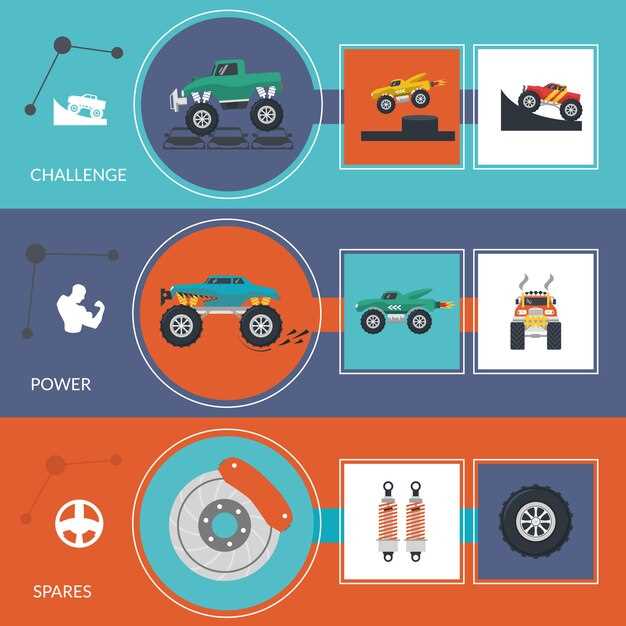
When it comes to performance vehicles, the choice of suspension is paramount to achieving the desired driving experience. Both track suspension and street suspension have their distinct characteristics tailored to specific environments. Understanding the fundamental differences between them can greatly impact your vehicle’s handling, comfort, and overall performance.
Track suspension is designed for maximum performance on race circuits, focusing on rigidity, responsiveness, and optimal grip. These systems often feature stiffer springs and dampers, allowing for better weight transfer during acceleration, braking, and cornering. The trade-off, however, is a harsher ride that can be less forgiving on everyday roads.
In contrast, street suspension prioritizes comfort and daily drivability. This setup typically includes softer springs and more compliant dampers, providing a smoother ride over various road surfaces. While street suspension may sacrifice some cornering performance, it delivers a balance that suits the demands of urban driving and longer commutes.
In this article, we will delve deeper into the engineering and design philosophies behind track and street suspension systems, examining how each choice affects vehicle dynamics and driver experience. Gaining clarity on these differences will help enthusiasts and everyday drivers alike make informed decisions based on their specific driving needs.
Performance Characteristics: How Track and Street Suspensions Differ
Track and street suspensions are designed with different performance characteristics in mind, yielding distinct driving experiences. Track suspensions prioritize handling, responsiveness, and stability at high speeds, making them ideal for racing environments. They often feature stiffer spring rates and dampers to minimize body roll and improve cornering capabilities. This rigidity enhances feedback from the road, allowing drivers to make precise adjustments during high-speed maneuvers.
Conversely, street suspensions focus on comfort, ride quality, and versatility for everyday driving. They are typically equipped with softer spring rates and dampers, enabling a smoother ride over various road conditions. While street setups provide adequate handling, they may sacrifice some responsiveness and precision compared to track-oriented designs. This trade-off is essential for delivering a more comfortable experience, especially on uneven or rough surfaces.
Additionally, track suspensions often incorporate specialized components, such as adjustable coilovers, allowing for fine-tuning of ride height and dampening settings. This customization is crucial for adapting to specific track conditions and driver preferences. In contrast, street suspensions are generally designed to be maintenance-free and user-friendly, appealing to a broader audience who may not have the expertise or desire to make frequent adjustments.
In terms of weight distribution, track suspensions may also favor lighter materials to enhance responsiveness, whereas street suspensions may prioritize durability and ease of repair. This difference affects the overall balance and dynamics of the vehicle, impacting how it behaves under various driving conditions.
Ultimately, the performance characteristics of track and street suspensions reflect the intended use of the vehicles they support. A balanced approach is essential for everyday driving, while a more aggressive setup is necessary for competitive environments, highlighting the significant differences in design philosophy and functionality between the two.
Durability and Maintenance Needs for Track and Street Suspensions

Track suspensions are engineered to withstand extreme conditions, including high-speed cornering and significant impacts from track features. Their components, such as dampers and springs, are typically made from high-strength materials to ensure longevity in competitive environments. However, this durability often comes at the cost of higher wear from intense usage, necessitating more frequent inspections and replacements of critical parts.
In contrast, street suspensions focus on comfort and daily drivability, leading to a construction that balances durability and ride quality. While they may use more forgiving materials, they are designed for lower stress environments, resulting in a longer lifespan under regular driving conditions. The maintenance needs tend to be less demanding, with longer intervals between required checks and replacements.
Regular maintenance for track suspensions involves thorough inspections before and after race events. Elements such as bushings, shock absorbers, and springs require consistent monitoring for signs of fatigue or damage. Adjustments may also be necessary to fine-tune performance according to track conditions.
Street suspensions, on the other hand, benefit from routine maintenance that includes periodic checks of alignment, tire wear, and fluid levels in shock absorbers. Owners may encounter fewer replacements, but it is crucial to assess components like struts and control arms regularly to prevent accelerated wear from daily driving conditions.
Ultimately, the choice between track and street suspensions affects not only the initial performance but also the long-term upkeep and durability of the vehicle. Knowing the specific requirements for each type will help owners maintain their systems effectively for optimal performance and safety.
Cost Considerations: Budgeting for Track vs Street Suspension Upgrades

When deciding between track and street suspension upgrades, understanding the cost implications is crucial. Both types of suspension systems serve different purposes and come with varying price tags. Here are the key cost considerations you should keep in mind:
-
Initial Investment:
- Track suspension upgrades tend to be more expensive due to the use of high-performance materials and technology. Expect to pay from $1,000 to $5,000 or more, depending on the brand and specifications.
- Street suspension systems are usually more affordable, ranging from $300 to $2,000. These upgrades prioritize comfort and everyday usability.
-
Installation Costs:
- Installing a track suspension often requires professional expertise, which can lead to higher labor costs. Budget an additional $500 to $1,500 for installation.
- For street suspensions, installation may be simpler, potentially lowering labor costs to around $200 to $800.
-
Maintenance Expenses:
- Track suspensions generally demand more frequent maintenance and specialized servicing to ensure optimal performance. Budget for potential costs of $200 to $500 annually.
- Street suspensions typically require less maintenance, reducing annual costs to around $100 to $300.
-
Resale Value:
- Upgrading to a track suspension might enhance performance features, but could limit the vehicle’s appeal to everyday drivers, potentially affecting resale value.
- Street suspensions tend to maintain a broader market appeal, which may help in preserving resale value more effectively.
-
Long-Term Investment:
- Consider how often you will use the vehicle on a track versus the street. Regularly experiencing track days justifies the investment in a high-quality track suspension.
- If daily driving and comfort are your primary concerns, opting for a street suspension may offer better long-term value and satisfaction.
In summary, when budgeting for suspension upgrades, carefully evaluate the initial costs, installation fees, maintenance expenses, potential resale value, and your usage patterns. Making an informed decision can lead to greater overall satisfaction and performance tailored to your driving needs.

